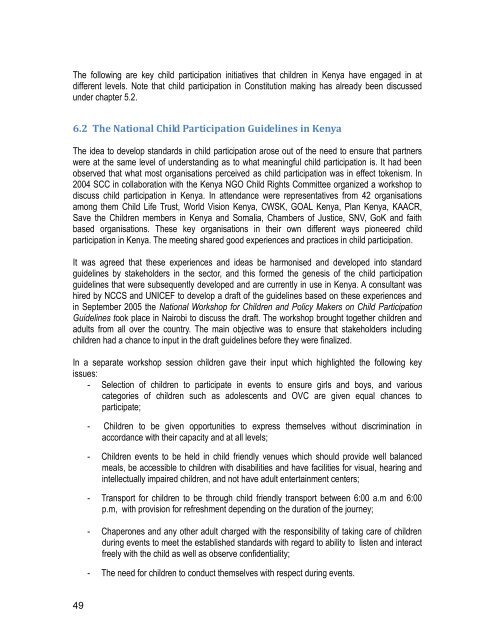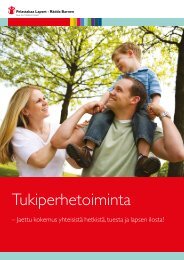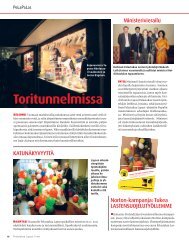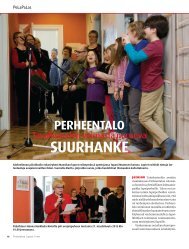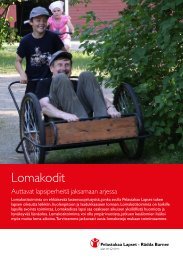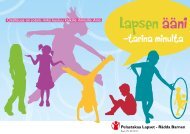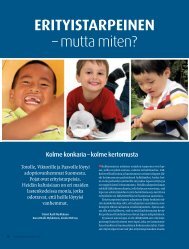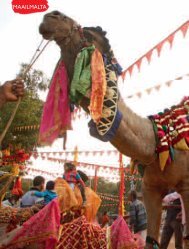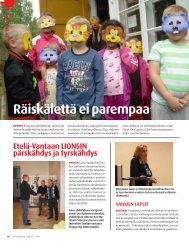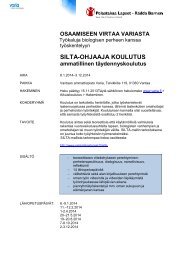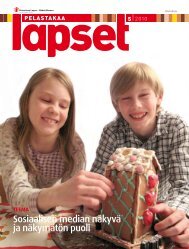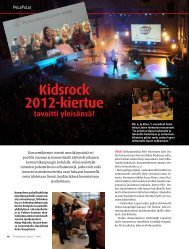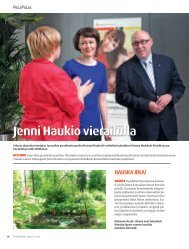the Rights of the Child has identified right to be heard as one of the four general pr<strong>in</strong>ciples of theConvention <strong>in</strong> addition to non-discrim<strong>in</strong>ation, survival and development and the best <strong>in</strong>terests ofthe <strong>child</strong>. Article 12 of the UNCRC provides that “States Parties shall assure to the <strong>child</strong> who iscapable of form<strong>in</strong>g his or her own views the right to express those views freely <strong>in</strong> all mattersaffect<strong>in</strong>g the <strong>child</strong>, the views of the <strong>child</strong> be<strong>in</strong>g given due weight <strong>in</strong> accordance with the age andmaturity of the <strong>child</strong>. For this purpose the <strong>child</strong> shall <strong>in</strong> particular be provided the opportunity to beheard <strong>in</strong> any judicial and adm<strong>in</strong>istrative proceed<strong>in</strong>gs affect<strong>in</strong>g the <strong>child</strong>, either directly, or through arepresentative or an appropriate body, <strong>in</strong> a manner consistent with the procedural rules of nationallaw.”Article 13 states that <strong>child</strong>ren have the right to freely express themselves as well as seek andreceive <strong>in</strong>formation. The ACRWC <strong>in</strong> Articles 7 and 8 states that <strong>child</strong>ren have freedom ofexpression as well as association. The Children Act Section 4 provides that <strong>child</strong>ren have a right tobe <strong>in</strong>volved <strong>in</strong> matters affect<strong>in</strong>g them.S<strong>in</strong>ce the adoption of the Convention <strong>in</strong> 1989, considerable progress has been achieved at thelocal, national, regional and global levels <strong>in</strong> the development of legislation, policies andmethodologies to promote the implementation of article 12. A widespread practice has emerged <strong>in</strong>recent years, which has been broadly conceptualized as “participation”, although this term itselfdoes not appear <strong>in</strong> the text of article 12. The term has evolved over the years and is now widelyused to describe ongo<strong>in</strong>g processes, which <strong>in</strong>clude <strong>in</strong>formation-shar<strong>in</strong>g and dialogue between<strong>child</strong>ren and adults based on mutual respect.6.1 Background to <strong>child</strong> participation <strong>in</strong> <strong>Kenya</strong>Activities related to <strong>child</strong> participation <strong>in</strong> <strong>Kenya</strong> were pioneered by organisations work<strong>in</strong>g <strong>in</strong> the<strong>child</strong>ren sector <strong>in</strong> the early 1990s <strong>in</strong>clud<strong>in</strong>g KAACR, CWSK, Save the Children, World Vision,Childlife Trust and Plan. The activities started as Child Rights Clubs (CRCs) also known as Rightsof the Child (ROC) clubs and then evolved to Child Led Movements. The clubs were established <strong>in</strong>Kisumu, Laikipia, Nakuru, Isiolo and Nairobi ma<strong>in</strong>ly <strong>in</strong> schools us<strong>in</strong>g the <strong>child</strong>-to-<strong>child</strong> methodology.In their formative stages, the clubs acted as avenues for <strong>child</strong>ren to learn about their <strong>rights</strong> but withtime <strong>child</strong>-led activities such as tree plant<strong>in</strong>g, kitchen garden<strong>in</strong>g and sports competitions were<strong>in</strong>cluded. Activities on <strong>child</strong> participation were also <strong>in</strong>troduced <strong>in</strong> <strong>child</strong> care <strong>in</strong>stitutions.To facilitate better understand<strong>in</strong>g of <strong>child</strong> <strong>rights</strong> and <strong>child</strong> participation the pioneer organisationsdeveloped facilitators’ manuals on how to tra<strong>in</strong> teachers as <strong>child</strong> moderators and how to establishand manage the clubs with<strong>in</strong> <strong>in</strong>stitutions. As a measure to popularize the ROC clubs concept andto create awareness issues such as on HIV/AIDS, district wide ROC club festivals were heldannually and attended by policy makers. Today ROC clubs are a common feature <strong>in</strong> many parts ofthe count<strong>ry</strong>, a situation that has contributed to the <strong>in</strong>creased awareness on <strong>child</strong> participation <strong>in</strong><strong>Kenya</strong>. Many <strong>child</strong>ren have benefitted from knowledge and skills <strong>in</strong> <strong>child</strong> participation and otherissues, and have gone on to jo<strong>in</strong> youth movements as <strong>child</strong> <strong>rights</strong> defenders. Others are now <strong>in</strong>formal employment where they cont<strong>in</strong>ue to champion the cause of <strong>child</strong>ren. Teachers and schoolmanagers from <strong>in</strong>stitutions that have established ROC clubs state that the students observe highlevels of discipl<strong>in</strong>e and that there is constant <strong>in</strong>teraction between the management as duty bearersand the students as <strong>rights</strong> holders. This has helped avert <strong>in</strong>cidences of school strikes and otheractions of <strong>in</strong>discipl<strong>in</strong>e.48
The follow<strong>in</strong>g are key <strong>child</strong> participation <strong>in</strong>itiatives that <strong>child</strong>ren <strong>in</strong> <strong>Kenya</strong> have engaged <strong>in</strong> atdifferent levels. Note that <strong>child</strong> participation <strong>in</strong> Constitution mak<strong>in</strong>g has already been discussedunder chapter 5.2.6.2 The National Child Participation Guidel<strong>in</strong>es <strong>in</strong> <strong>Kenya</strong>The idea to develop standards <strong>in</strong> <strong>child</strong> participation arose out of the need to ensure that partnerswere at the same level of understand<strong>in</strong>g as to what mean<strong>in</strong>gful <strong>child</strong> participation is. It had beenobserved that what most organisations perceived as <strong>child</strong> participation was <strong>in</strong> effect tokenism. In2004 SCC <strong>in</strong> collaboration with the <strong>Kenya</strong> NGO Child Rights Committee organized a workshop todiscuss <strong>child</strong> participation <strong>in</strong> <strong>Kenya</strong>. In attendance were representatives from 42 organisationsamong them Child Life Trust, World Vision <strong>Kenya</strong>, CWSK, GOAL <strong>Kenya</strong>, Plan <strong>Kenya</strong>, KAACR,Save the Children members <strong>in</strong> <strong>Kenya</strong> and Somalia, Chambers of Justice, SNV, GoK and faithbased organisations. These key organisations <strong>in</strong> their own different ways pioneered <strong>child</strong>participation <strong>in</strong> <strong>Kenya</strong>. The meet<strong>in</strong>g shared good experiences and practices <strong>in</strong> <strong>child</strong> participation.It was agreed that these experiences and ideas be harmonised and developed <strong>in</strong>to standardguidel<strong>in</strong>es by stakeholders <strong>in</strong> the sector, and this formed the genesis of the <strong>child</strong> participationguidel<strong>in</strong>es that were subsequently developed and are currently <strong>in</strong> use <strong>in</strong> <strong>Kenya</strong>. A consultant washired by NCCS and UNICEF to develop a draft of the guidel<strong>in</strong>es based on these experiences and<strong>in</strong> September 2005 the National Workshop for Children and Policy Makers on Child ParticipationGuidel<strong>in</strong>es took place <strong>in</strong> Nairobi to discuss the draft. The workshop brought together <strong>child</strong>ren andadults from all over the count<strong>ry</strong>. The ma<strong>in</strong> objective was to ensure that stakeholders <strong>in</strong>clud<strong>in</strong>g<strong>child</strong>ren had a chance to <strong>in</strong>put <strong>in</strong> the draft guidel<strong>in</strong>es before they were f<strong>in</strong>alized.In a separate workshop session <strong>child</strong>ren gave their <strong>in</strong>put which highlighted the follow<strong>in</strong>g keyissues:- Selection of <strong>child</strong>ren to participate <strong>in</strong> events to ensure girls and boys, and variouscategories of <strong>child</strong>ren such as adolescents and OVC are given equal chances toparticipate;- Children to be given opportunities to express themselves without discrim<strong>in</strong>ation <strong>in</strong>accordance with their capacity and at all levels;- Children events to be held <strong>in</strong> <strong>child</strong> friendly venues which should provide well balancedmeals, be accessible to <strong>child</strong>ren with disabilities and have facilities for visual, hear<strong>in</strong>g and<strong>in</strong>tellectually impaired <strong>child</strong>ren, and not have adult enterta<strong>in</strong>ment centers;- Transport for <strong>child</strong>ren to be through <strong>child</strong> friendly transport between 6:00 a.m and 6:00p.m, with provision for refreshment depend<strong>in</strong>g on the duration of the journey;- Chaperones and any other adult charged with the responsibility of tak<strong>in</strong>g care of <strong>child</strong>rendur<strong>in</strong>g events to meet the established standards with regard to ability to listen and <strong>in</strong>teractfreely with the <strong>child</strong> as well as observe confidentiality;- The need for <strong>child</strong>ren to conduct themselves with respect dur<strong>in</strong>g events.49


